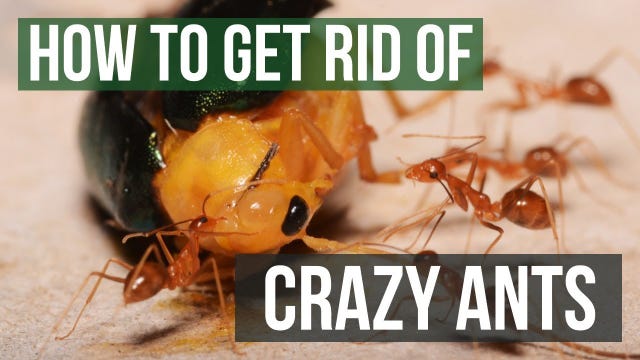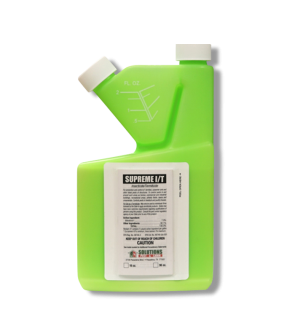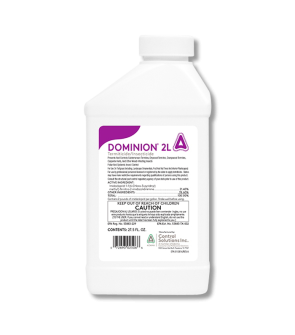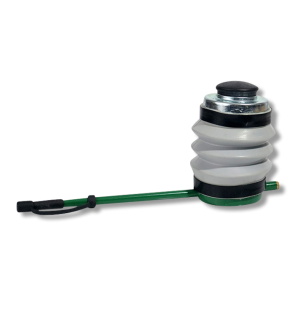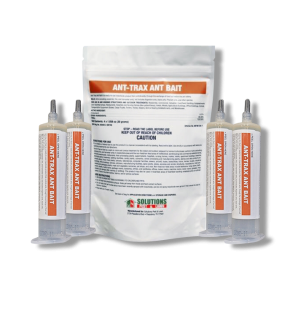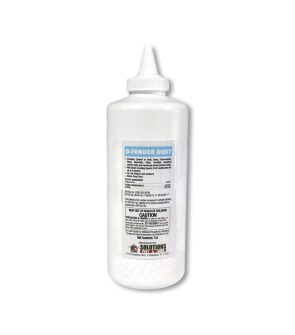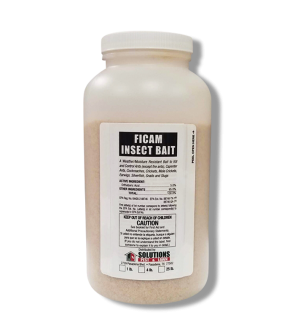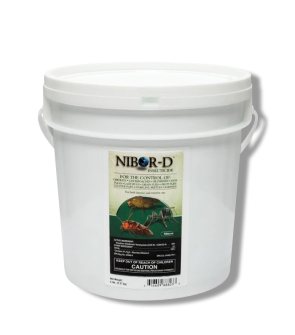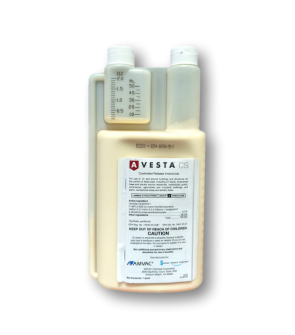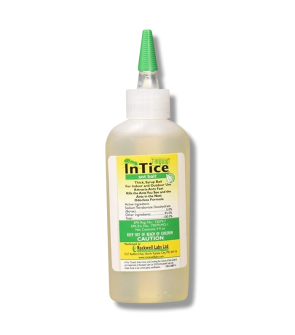Gain access to personalized product screening, the best pricing, rewards, and more!
Most Effective Products
Crazy Ant Control: How To Get Rid of Crazy Ants
This page is a crazy ant control guide. Using the products and methods suggested, you will get control of crazy ants. Follow this guide and use the recommended products, and we guarantee 100% control over crazy ants.
Due to their erratic behavior and movements, crazy ants (also known as the tawny or raspberry crazy ant) are one of the toughest pests to control once they invade indoors. This behavior is how they earned the "crazy" in their name. Crazy ants appear to wander and don’t follow specific trails like others. If left untreated, crazy ant populations can quickly get out of control.
Crazy ants are either brown or black and can be identified by their long, 12-segment antennae and extra-long legs. They are predominantly found in the southeastern part of the United States. Each colony may contain millions of ants and multiple queens who lay hundreds of eggs. Inside, crazy ants can nest in small cracks, crevices, and voids and particularly enjoy damp areas.
Crazy ants can impact humans on several levels. They bite humans and wildlife and can attack cattle and poultry. They also tend to infest electrical equipment and cause short circuits. This damage can be costly, with over 140 million dollars needing to be spent annually in the United States to fix the electrical damage Crazy Ants create.
If your home has been overrun by crazy ants, this helpful guide below can equip you with the right professional tools and DIY know-how to overcome infestations with ease.
Identification

Before you can proceed with treatment, you must identify and ensure you are dealing with crazy ants. Misidentification can lead to using the wrong treatment products, which results in a waste of your time and hard-earned money. Here are some common characteristics of crazy ants so you know what they look like for easy identification.
- Crazy ants are small (around 1/8 of an inch long) and dark-colored, usually a grayish black, but they can also be tan-colored.
- The body has numerous coarse, long hairs. Crazy ant workers have long legs and long 12-segmented antennae with no club.
- They are called "crazy ants" because they move in erratic patterns. Although they do follow a foraging trail, they can move in a zig-zag fashion that separates them from other ant species.
Use the image and description above to help you properly identify crazy ants on your property. If you are unsure, you can contact us with a high-quality closeup photo of the ant, and we will try to identify the species for you.
Inspection

After you have confirmed that you are dealing with crazy ants, you need to proceed with an inspection. During this phase, you need to locate the areas where crazy ants are found or infesting so you know where to focus treatment.
Crazy ants have a versatile diet and are predators, foragers, and scavengers. Once inside a building, they immediately begin searching for food. They enjoy eating proteins, animal matter, grease, and other insects, but they will readily eat foods that contain sugar. Inspect both indoors and outdoors to locate the infestation.
Where To Inspect
In outdoor sites, crazy ants prefer to nest in rotting wood, fallen tree limbs and logs, tree stumps, under stones, bricks, and lumber. They can also be found nesting in the soil of potted plants and gardens. Crazy ants often nest in wall voids and beneath floors, particularly near plumbing within indoor sites.
What To Look For
You're looking for foraging trails and the ants themselves. Crazy ants typically do not build an anthill. Instead, they create their nests inside wood, in the soil, and other hollowed-out crevices. Search the cracks and crevices of all these places mentioned above for their foraging trails and ant activity. Typically, crazy ants move in erratic patterns and random directions.
Treatment
Once you have confirmed crazy ant activity, it is time to begin treatment. Remember to read all product labels, follow the application instructions on these labels, and wear personal protective equipment (PPE) to stay safe.
Crazy ant control should be conducted both indoors and outdoors. To create a barrier outdoors, we recommend a broadcast treatment of Supreme IT Insecticide around your yard and a perimeter treatment around your home or building.
Indoors, we recommend applying Ant-Trax Ant Bait and treating hard-to-reach areas and tight spaces with D-Fender Dust.
Step 1: Outdoor Treatment with Supreme IT
Supreme IT is a powerful insecticide that targets over 75 insect pests, including crazy ants. It delivers a quick knockdown and a long residual effect of up to 90 days. This product also works as a repellent, so it is perfect for use around the perimeter of your structure to create an insecticidal barrier.
Calculate the square footage of the treatment area to determine how much Supreme IT you will need. To find the square footage, measure the length and width in feet, then multiply them together (length X width = square footage).
To treat 1,000 square feet, apply 1 ounce of Supreme IT with a gallon of water in a pump sprayer.
Once mixed, spray crazy ant nesting sites such as around mulched areas, flower beds, yard debris, and landscaping.
Next, do a perimeter treatment by spraying 3 feet up and 3 feet out from the foundation of your structure. While spraying in this manner, also spray window frames, door frames, eaves, soffits, rain gutters, cracks and crevices, and electrical/plumbing penetrations.
Do not let people or pets enter areas treated until the spray completely dries.
Step 2: Apply D-Fender Dust
To start your indoor treatment, use D-Fender Dust to treat ants that have entered. D-Fender Dust is an effective waterproof insecticidal dust used in hard-to-reach areas like wall voids, cracks and crevices, and moisture-prone areas with lots of crazy ant activity.
To use D-Fender Dust, you will need a handheld duster. Fill the Duster halfway with D-Fender Dust and leave lots of room for air to circulate inside. Apply by squeezing the duster. Apply in cracks and crevices inside your home, in wall voids, under appliances, behind baseboards, and electrical fixtures.
Step 3: Apply Ant-Trax Ant Bait
Ant-Trax is a potent ant bait that is attractive to crazy ants because of its sweet taste. It works slowly, allowing the ants to carry the poison back to their nest, where the population is eliminated. Ant-Trax is easy to use and comes as a syringe for easy application.
Apply at the rate of a pea-sized drop in places where you have noticed crazy ant activity. Separate each application by at least one foot. Apply near window frames, door frames, countertops, under sinks (close to moisture), around appliances, and close to their food source.
Do not try to kill the ants or use cleaning products on the places where you applied Ant-Trax. The point is to let the ants come into contact with the product so they will carry it back to their nest. Allow 7 to 10 days, and let the ants feast undisturbed on the bait.
Prevention
Once the crazy ant infestation has been eliminated, you will want to prevent reinfestation by enacting some preventative measures. Here are some crucial to-dos to carry out to ensure crazy ants don't return:
- Start by reducing yard debris. Get rid of woodpiles, logs, rocks, bricks, tree stumps, leaf litter, and general clutter to eliminate harborage areas that these ants might use.
- Maintain a regular cleaning schedule, quickly clean up, and pick up spills and food crumbs. By eliminating their food sources, crazy ants will be forced to look for food in other residences. Remove moisture problems from your property.
- Fix or repair leaky faucets and plumbing.
- Trim back vegetation away from your property to prevent ants from accessing your home.
- Finally, spray Supreme IT every 90 days around the perimeter of your property to prevent ants and other insects from coming inside.
Key Takeaways
What are Crazy Ants?
- Crazy ants are a common ant invasion known to infest yards and interiors. Their erratic movement patterns distinguish them.
How To Get Rid of Crazy Ants
- We recommend treating both indoors and outdoors to eliminate crazy ants. For indoor treatments, use Ant-Trax Ant Bait and D-Fender Dust. For outdoor treatments, use Supreme IT Insecticide.
Preventing Crazy Ant Reinfestation
- Prevent crazy ant reinfestation by making environmental modifications (reducing leaf litter and moisture issues) and applying a preventative barrier of Supreme IT every 90 days.






